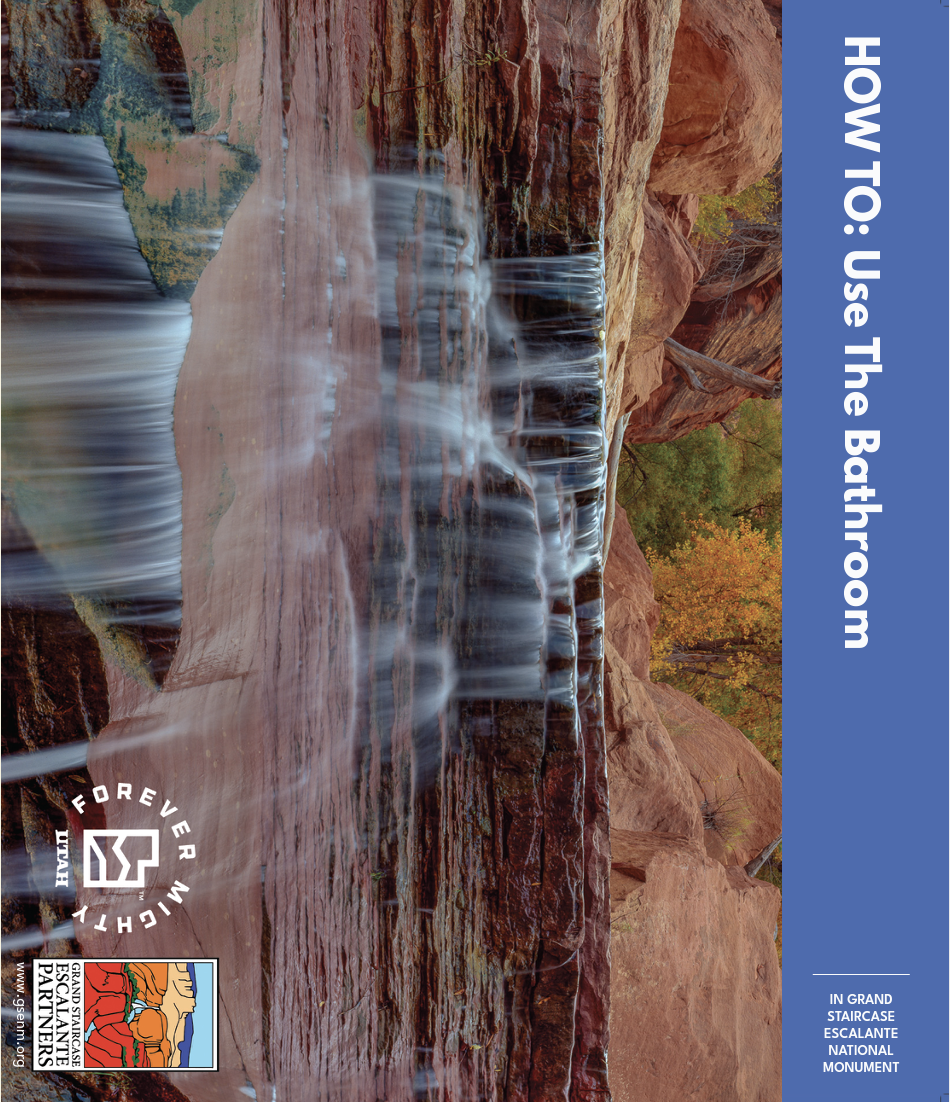Visit with Respect
Air Quality
Grand Staircase has become a destination spot for recreation and exploration, but resources on the ground are limited, and working together to support the land is more important than ever. Recent vandalism in areas formally within the Monument comes as Grand Staircase experiences an unprecedented rise in visitation. These inexplicable acts of vandalism echo the horrific desecration to cultural sites like the Birthing Rock petroglyphs in Moab. It is vital that we all spread the message of respectful visitation.
The first thing to know about Grand Staircase-Escalante is that it’s the ancestral homelands for many Native peoples alive today, including the Hopi, Zuni, Dine/Navajo, San Juan Southern Paiute, Tesuque Pueblo, Kaibab Paiute, Ute, Ute Mountain Ute, Jemez Pueblo, and Acoma nations. Most of the cultural and historic sites we seek to safeguard are their ancestral homes. Far from being “ruins,” they are the dwellings where their families spent their lives and the panels of pictographs and petroglyphs are records of their family histories. We must respect the Indigenous Peoples with enduring connections to this landscape and preserve the places that are essential to sustaining their culture, tradition, and connection to their families.
The Indigenous Peoples of Grand Staircase lived in this region since time immemorial. They lived with a holistic understanding of the natural world – the shadows that cool the rocks, the water trickling from seeps and springs, fish spawning in the high mountain lakes, the signs of rain and drought, the medicine of the plants, shelter found beneath canyon walls, and the tracks of animals in the upland forest. Every aspect of life was weaved into understanding a healthy relationship with the land.
Davina Smith, a member of the Diné (Navajo) tribe and a Partners’ board member, helped organize the Women of Bears Ears. They released a statement published in the New York Times that beautifully speaks to the relationship Native peoples have with the land – a connection we should all seek to cultivate. We encourage you to read this powerful statement in its entirety here.
“We relate to these lands who are alive. We know the names of the mountains, plants and animals who teach us everything we need to know to survive. We have within our cultures a familial bond. We know these lands as a mother knows her child, as a child knows her mother.”

Airborne pollutants such as smog, dust, pollen, soot, and smoke are potentially hazardous. Combustion especially, including engine exhaust and wildfire smoke, contain particulate matter that is 2.5 micrometers and smaller, also known as PM2.5.
PM2.5 is harmful because it remains suspended in the air for longer durations of time, and when inhaled is small enough to enter the bloodstream through the lungs. Short term exposure can lead to congestion, coughing, increased blood pressure, and inflammation. Prolonged exposure can contribute to respiratory distress and other chronic ailments such as asthma, emphysema, cardiopulmonary disease, pneumonia, and more.
How can you reduce your exposure?
Check air quality before venturing outside. When air pollution is above healthy levels, it is best to remain indoors, limit physical activity, or wear a mask (such as N95) that is able to filter out fine particles.
0-50: Air quality is satisfactory, and pollution poses little or no risk.
51-100: Air quality is acceptable. There may be risk for unusually sensitive people.
101-150: Members of sensitive groups may experience health effects with 24 hours of exposure. The general public is less likely to be affected.
151-200: The general public may experience health effects with 24 hours of exposure. Sensitive groups may experience more serious health effects.
201-300: Health alert. The risk of health effects is increased for everyone with 24 hours of exposure.
>300: Health warning of emergency conditions. Everyone is likely to be affected with 24 hours of exposure.
PurpleAir is the largest national real-time air quality monitoring system. It utilizes crowdsourced data from a network of individual internet-connected sensors that continually monitor PM2.5 pollution. The data can be accessed from anywhere at: https://map.purpleair.com.
We must stand up to vandalism and disrespect, and we must weed out the historical lies that have been repeated over and over for hundreds of years. The Indigenous People who lived here are still here. This land echoes their love for what was, and still is, their home. We are always visitors here as we roam in remote places seeking peace and a deeper understanding of ourselves in the context of the wilderness. Visiting with respect means that we honor the home of the Native people with every step and breath that we take.
Honoring the land and learning its lessons is a task we take up every day. We hope you will support this vision and adopt it for yourself. There are so many lessons to be learned at Grand Staircase, but none of them are possible unless we protect the landscape, biodiversity, and cultural sites, and acknowledge the truth about the people who not only survived in this remote and rugged place, but continue to live here.
We invite you to help us protect Grand Staircase by supporting the work that we do, including our conservation programs to protect biodiversity, native plant restoration, stewardship, virtual and in-person educational events, and climate change research.
Together, we can honor the land and learn its lessons—every day and forever.
Ways to learn and get involved:
Honoring the Land Trail Ambassador Program
Are you interested in learning more about impact minimization behaviors and would like to teach others about how to respectfully visit GSENM? Become a Trail Ambassador! Grand Staircase Escalante Partners is partnering with the Bureau of Land Management to get volunteers out on the ground to help educate visitors about the monument and best practices to use when visiting. You can sign up to be a Trail Ambassador here.
Monument Stewardship Volunteer Opportunities
Want to give back to Grand Staircase Escalante National Monument? Help us mitigate visitor impacts on the monument by signing up to volunteer to remediate graffiti, pick up trash, pull weeds, and complete other needed stewardship projects by visiting our volunteer sign up page here.
Resources:
- How To Guides: Fun and kid-friendly guides on “How To” visit GSENM
- Friends of Cedar Mesa’s Visit with Respect Video Series: A great video series on visiting the Colorado Plateau and archeological/historical sites with respect
- Deserts and Canyon Skills and Ethics Booklet from the Center of Leave No Trace
- BLM’s GSENM Website: We recommend that all visitors stop by a BLM visitor center before heading out on the monument to learn more about impact minimization, road and weather conditions, and permits.
- Grand Staircase-Escalante is a hotspot for bee diversity. The Monument is home to over 660 different species of bees – that’s more than the entire eastern half of the United States! To learn more, click here.








